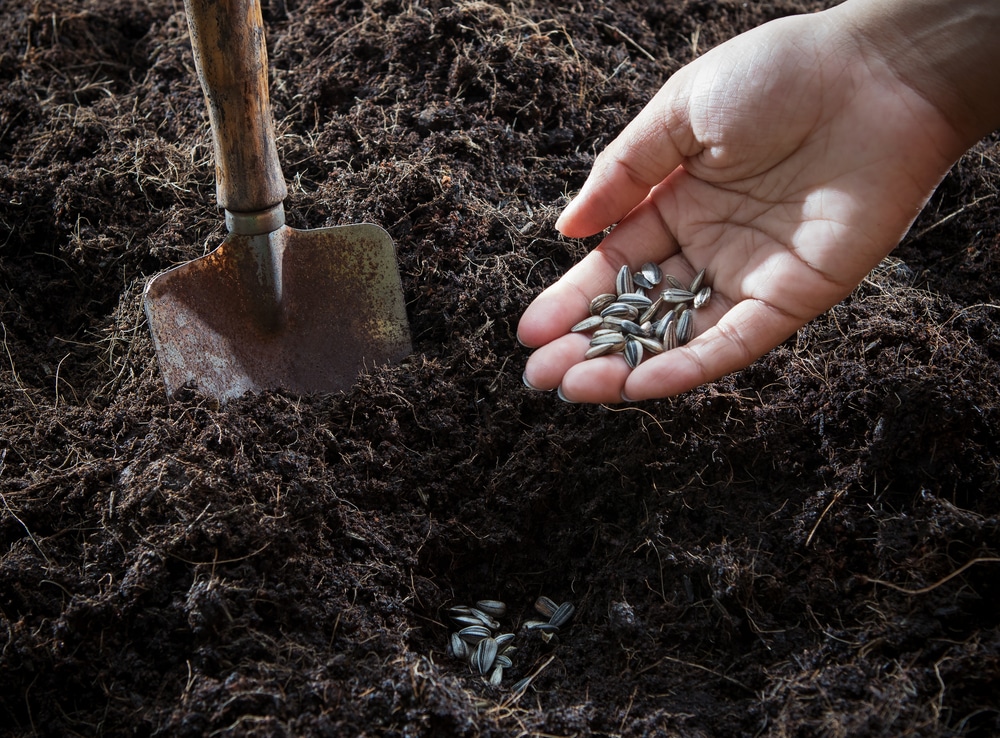Last Updated on
Knowing when the best time is for your region is essential if you want to plant sunflower seeds in the UK. Ensure you are planting at the right time, as the weather can vary quite a bit across the country. This way, your flowers have the best chance of growing and blooming!
Even If it’s your first time planting sunflowers, don’t worry. This blog post will discuss when to plant sunflower seeds in the UK.
Sunflowers: Characteristics, Common Varieties, and Origins
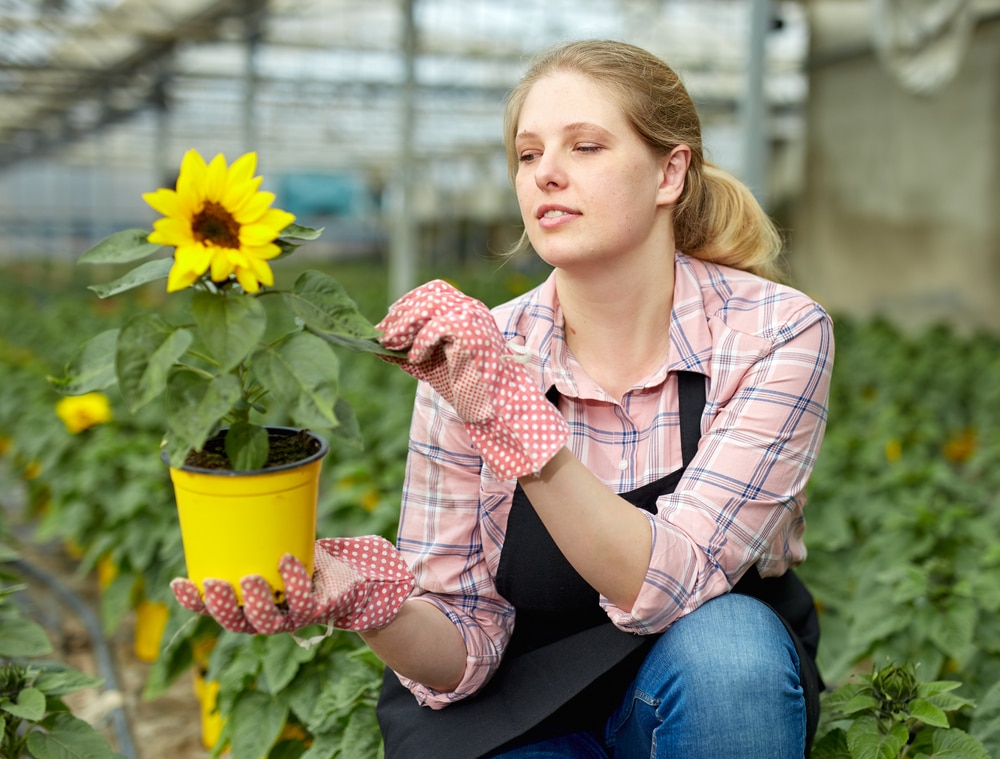
The sunflower (Helianthus annuus) is an annual plant in the family Asteraceae, with a large flower head that resembles a sun. The sunflower’s stem can grow up to three meters tall, and the flower heads can be up to 30 cm in diameter.
These beautiful plants are native to North America, but they have been introduced to other parts of the world and grown in many countries. There are many different varieties, with different colours and sizes of flowers. Some common varieties include American Giant, Russian Mammoth, Sundance Kid, Sunny Smile, Moulin Rouge, Chianti and Skyscraper,
There are two main types of sunflowers: those grown for their seeds and those grown for their flowers. The seeds of sunflowers can be eaten either raw or roasted, and they are a popular ingredient in bird feeders. The flowers of sunflowers can be used to make tea, and they are also edible.
What Are the Benefits of Growing Sunflowers?
There are many benefits of growing sunflowers in the UK. Here’s why a novice gardener should add them to his or her planting list.
They Are a Beautiful Addition to Any Garden
Sunflowers make a great natural fence, hedge, or privacy screen with their height. Sunflowers in the garden also provide partial shade for other plants that need protection from the harsh midday sun.
They Make Lovely Cut Flowers
Finally, sunflowers make lovely cut flowers and can be used to brighten up any room in your home.
The Plants Attract Pollinators
Sunflowers are excellent at attracting bees and other pollinators to your garden, perfect for the environment.
They Have Medicinal Properties
Sunflowers have been used medicinally for centuries. Sunflower tea is said to help with stomach issues, and the oil has been known to soothe burns and skin irritations.
They Are Edible
Sunflowers are also edible. Their nutritious seeds can be roasted and eaten as a snack and are rich in vitamins and minerals. The oil from sunflower seeds can also be used for cooking, the leaves can be used in salads, and the petals can be used to make tea. Additionally, the seeds make excellent birdseed.
Me and Kiwu made Pork w/ Cherry BBQ sauce, Kale salad w/ Sunflower seeds, and Diced potatoes.
— Luci (@luci_4k) February 28, 2022
We are both cracked 👀 pic.twitter.com/pNVP7qJX7Y
Sunflowers Absorbs Contaminants and Toxic Metals From the Soil
Sunflowers have been shown to absorb heavy metals and other pollutants from the soil, making them an excellent choice for gardening in areas that have been contaminated by pollution.
They Suppress Weed Growth
Unknown to many, sunflowers are remarkable for suppressing weed growth. The plants will shade the ground and inhibit the germination of weeds, which can help keep your garden looking tidy.
When to Plant Sunflowers Seeds in the UK
Now that you know the main benefits of growing sunflowers, let’s discuss when to plant them in different parts of the UK.
Sunflowers can generally be planted in the UK from late May until early July. However, you will need to check your local weather forecast to ensure there is no chance of a frost occurring after you have planted your seeds. If there is a risk of a frost, then it is best to wait until later in July to plant your sunflowers.
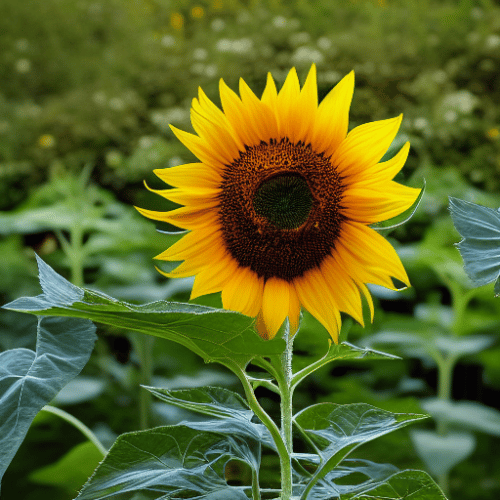
If you are planting sunflowers in Northern Ireland, Scotland, or Wales, then you will need to wait until mid-June to plant them. This is due to the fact that there is a higher risk of frost in these parts of the UK.
Sunflowers need full sun to grow and bloom properly, so make sure you are planting them where they will receive six or more hours of direct sunlight each day.
If you are growing sunflowers for their edible seeds, it is best to plant them towards the end of June or early July. This is because the seeds need time to mature before they can be harvested.
If you are growing sunflowers for their flowers, it is best to plant them in late May or early June, giving the plants enough time to grow and bloom before the weather gets too hot. Remember to water your sunflowers regularly, especially during times of drought. Use a watering can or a garden hose to water them.
We hope this section has helped you figure out when the best time to plant sunflowers is in your region of the UK. Now it’s time to grow your own sunflowers!
How to Grow Sunflowers From Seeds
Now let’s discuss how to plant sunflower seeds correctly.
Step 1: Choose a Spot in Your Garden
The first step is to choose a spot in your garden where the sunflowers will have plenty of room to grow. They grow up to 12 feet tall, so make sure you have enough space!
Step 2: Till the Soil
Next, till the soil and add garden compost or manure. Sunflower seeds need nutrient-rich and well-drained soil to thrive.
Step: Plant the Sunflower Seeds
Once you have prepared the soil, it’s time to plant the seeds! You can either sow sunflower seeds in a trench in your garden or start them indoors in pots and then transplant them later. The seeds need at least 6 inches of space between them.
If you are planting the seeds directly in the ground, wait until after the last frost has passed. The best time to plant sunflowers in the UK depends on your region, so consult a local gardening guide or online map to find out when to plant them in your area.
If you start the seeds indoors, wait until the soil has warmed up to at least 60 degrees Fahrenheit before planting. Sunflower seeds germinate best at temperatures between 68 and 86 degrees Fahrenheit.
Step 4: Water Them Well
Once planted, the seeds need to be watered well. Keep the soil moist until they germinate in approximately seven to 10 days. After that, water them regularly, especially during dry periods.
Most gardeners water their sunflowers once a week, but you may need to water them more often if the weather calls for it.
Step 5: Monitor Your Sunflowers
Now all you have to do is be patient and wait for your sunflowers to grow! Once the first leaves emerge, transplant your sunflowers spaced two feet apart from one another.
Step 6: Apply Fertiliser
Once the plants are a few inches tall, fertilise them with a high-phosphorus fertiliser. Examples of these are bone meal or a water-soluble fertiliser made for blooming plants.
Fertilise your sunflowers every two weeks until they start to bloom, then switch to a high-potassium fertiliser (like seaweed extract) to encourage more flowers.
Step 7: Harvest Your Sunflowers!
After about three to four months, your sunflowers will be ready to harvest. Cut the blooms off the plants and enjoy!
How to Harvest Sunflower Seeds
The most common challenge people have when harvesting sunflower seeds is that the seeds are tiny and can be quite difficult to extract from the flowers. So if your sunflowers are ready for picking, here’s a guide to help you out:
- When the back of the flower head turns brown, it’s time to harvest your seeds.
- Cut the flower heads off the plant and dry them in a sunny spot for a week or two.
- After they are fully dry, remove the seeds from the heads and store them in an airtight container.
- You can also roast the seeds after you have removed them from the head. Just put them in a single layer on a baking sheet and bake at 300 degrees Fahrenheit for approximately 20 minutes or until they are golden brown.
That’s it! Now you know how to plant and harvest sunflower seeds. So what are you waiting for? Get out there and start growing your sunflowers today!
Tips for Growing Sunflowers in the UK
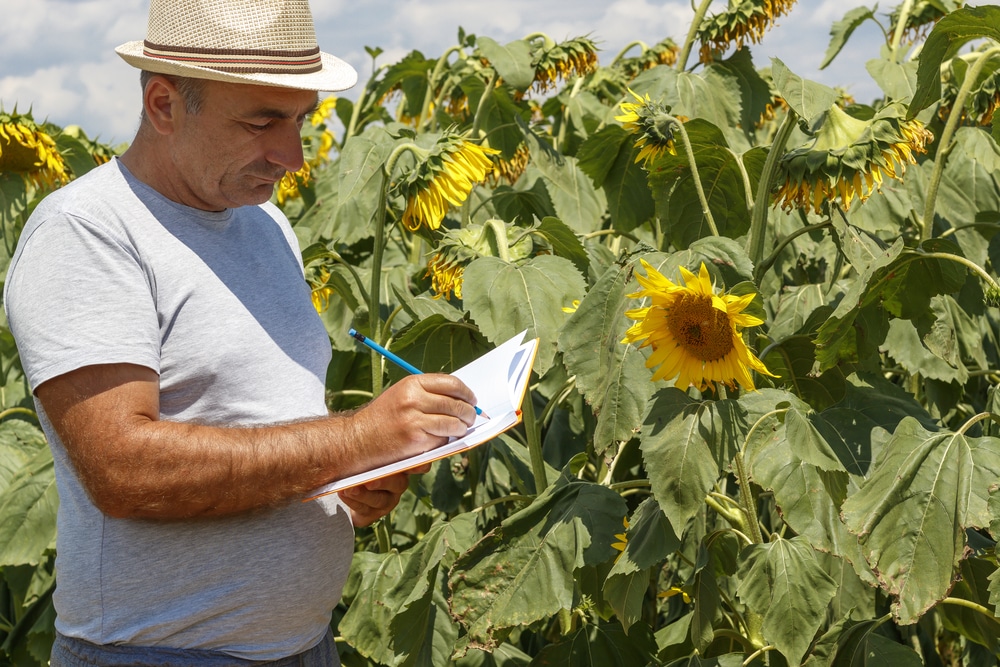
Here are several tips to help you grow beautiful and healthy sunflowers:
- Don’t plant sunflower seeds too early in the season. If you plant them too early, the sunflowers will not have enough time to mature and produce seeds.
- Water your sunflowers regularly, especially during dry periods. Sunflowers require about an inch of water per week.
- Fertilise your sunflowers every two weeks with a high-phosphorus fertiliser to encourage blooming.
- After the flowers bloom, switch to a high-potassium fertiliser (like seaweed extract) to encourage seed production.
- Harvest your sunflowers when the back of the flower head turns brown.
- Store the seeds in an airtight container after they are fully dry. You can also roast them for a tasty snack!
How to Protect Your Sunflowers From Wildlife
Sunflowers are beautiful plants that can add a touch of colour to any garden, but they can also be attractive to wildlife. So it’s crucial to take steps to protect them from animals like birds and squirrels.
One way to protect your sunflowers is to install a fence around the garden. This will keep squirrels and other animals from reaching the plants.
Another option is to use a repellent spray or powder to deter wildlife from eating your sunflowers. There are various types of repellents available, so be sure to select one suited to your needs.
To protect your plants from birds, you can also hang a bird feeder in the garden. This will provide the birds with food, so they won’t be as tempted to eat your sunflowers’ seeds.
Following these tips, you can grow beautiful and healthy sunflowers that will last for years to come.
Finally, you can also try planting sunflower seeds in pots or other containers so that you can move them.
Sunflowers can liven up your indoor and outdoor spaces. Follow these sunflower growing tips and enjoy these lovely plants for years to come.
Pests and Diseases That Affect Sunflowers
Just like roses and other garden plants, sunflowers are susceptible to pests and diseases. Here are a few that can affect how your sunflowers grow:
Pests
- Sunflower moths: These pests lay their eggs on the sunflower heads, and when the larvae hatch, they eat the seeds.
- Aphids: These tiny insects suck sap from plants, causing leaves to wilt and distort. They can also transmit viruses.
- Thrips: These tiny insects can cause discolouration and distortion of leaves, and they also eat the seeds.
Diseases
- Verticillium wilt: This fungus causes leaves to turn yellow and die. The stem wilts and the flowers droop. Affected plants usually don’t produce any seed heads.
- Powdery mildew: This fungal disease causes a white powder to form on the leaves. The leaves may also turn yellow and die.
- Bacterial blight: This bacterial disease causes water-soaked spots on the leaves. The spots enlarge and turn black, and the entire plant may die.
Frequently Asked Questions When Growing Sunflowers
When Is the Best Time to Plant Sunflower Seeds in the UK?
The best time to plant sunflower seeds in the UK depends on your region. Check with your local gardening centre for specific advice.
What Type of Soil Should I Use?
Sunflowers grow well in light, sandy soil that drains well.
How Deep Do I Need to Sow the Seeds?
Sow seeds in a garden trench that are about two inches deep.
Do I Need to Fertilise Them?
Sunflowers need fertile soil. They need fertilisers that are high in phosphorous and potassium.
How Often Do I Need to Water Them?
Water sunflowers regularly, especially during hot, dry weather. They should be watered at least once a week and more often if necessary.
What Pests and Diseases Affect Sunflowers?
Pests that can affect sunflowers include sunflower moths, aphids, and thrips. Diseases affecting sunflowers include verticillium wilt, powdery mildew, and bacterial blight.
When Do the Flowers Bloom?
The flowers usually bloom about 60 days after planting.
How Late Can I Plant Sunflowers in the UK?
You can plant sunflowers in the UK until late summer.
I Want Tall Sunflowers. What Varieties Should I Plant?
Plant the ‘Russian Mammoth’ and ‘American Giant if you want tall sunflowers.’ They are tall varieties.
What Is the Best Way to Harvest Sunflower Seeds?
The easiest way to harvest the seeds is to cut off the head of the flowers and let them dry for a few days. Then crack the seeds open by hand or with a hammer.
What Can I Do With the Seeds When They’re Mature?
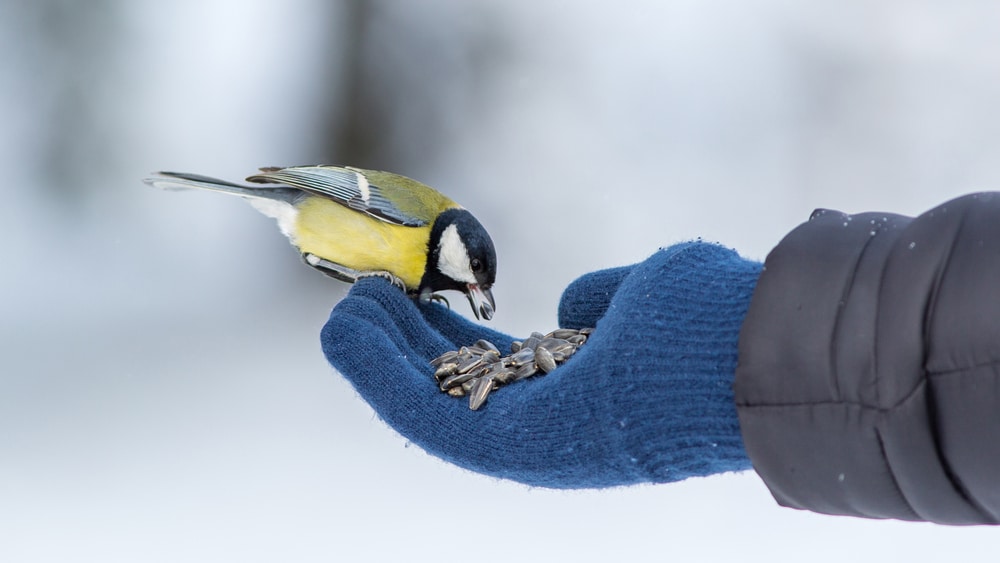
You can use the seeds for bird food or roast them and eat them yourself. You can also plant them again next year.
How Do I Tall Support Sunflower Plants?
You can support sunflower plants by tying them to a bamboo cane or stake.
Can I Grow Sunflowers Indoors?
Yes, you can grow sunflowers indoors in a large pot. Just see to it that the pot is big enough for the plant to grow.
How Long Do Sunflowers Last?
Sunflowers usually last one season, but they can sometimes self-seed and come back the following year.
Where Can I Buy Sunflower Seeds for Planting?
You can buy a sunflower seed packet at most gardening stores.
What Is the Difference Between a Hybrid and an Heirloom Variety?
A hybrid variety is a cross between two different types of plants. An heirloom variety is a plant that has been passed down from one generation to the next.
Should I Soak Sunflower Seeds Before Planting?
No, you don’t need to soak the seeds before planting.
What Is the Best Way to Store Sunflower Seeds?
The best way to store the seeds is in an airtight container in a cool, dark place.
Do Sunflowers Come In Colours Other Than Yellow?
Yes, sunflowers come in various colours, including yellow, white, red, and orange.
Growing Sunflowers in Your Garden
Now that you know when to plant sunflower seeds in the UK, it’s time to start growing them in your garden! Just remember to choose the right variety. With a little care and attention, you’ll be able to enjoy a beautiful sunflower harvest in no time. Thanks for reading!
Did you find this article helpful? Do share it on Facebook, Instagram, Twitter, or Pinterest! And stay tuned for more gardening tips and advice from our experts. Happy planting!
Paul is the type of person who never met a problem he couldn’t fix. He can always be found tinkering with something in his house, even if it isn’t broken! His tips and tricks are often shared on our site. He’s the one you call when something breaks because he has been known to improvise fixes for everything from leaky faucets to malfunctioning dryers.

